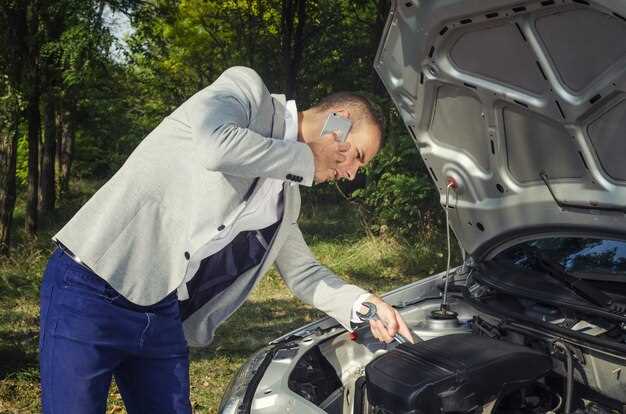
One of the most frustrating experiences for any car owner is to find their vehicle’s battery dead, especially when you rely on it for daily transportation. A consistently dying battery can signal several underlying issues that need to be addressed. Understanding these causes can help you prevent future problems and ensure that your car remains reliable.
One common reason for a dead battery is excessive draw from electrical components when the vehicle is turned off. Many drivers are unaware that some devices, like interior lights, dashboard indicators, or aftermarket installations, continue to consume power even when the engine is off. This phantom drain can significantly deplete your battery over time, leading to frequent jumps or replacements.
Another factor to consider is the health of the battery itself. Car batteries have a limited lifespan, typically ranging from three to five years. As they age, their ability to hold a charge diminishes, making them more susceptible to dying unexpectedly. Regular maintenance checks can help identify when it’s time for a replacement before you find yourself stranded with a dead battery.
Identifying Electrical Draws That Drain Your Battery

One of the primary reasons for a car battery constantly dying is the presence of electrical draws that go unnoticed. These draws can be caused by various components within your vehicle that continue to use power when the engine is off.
Common Sources of Electrical Draw: Start by checking devices that may not turn off completely. Items like interior lights, trunk lights, and glove box lights are frequent culprits. If any of these remain illuminated after shutting the vehicle down, they can create a significant battery drain.
Another common issue is the car stereo systems or aftermarket components installed without proper wiring. If these systems are not hardwired to automatically shut off, they can silently draw power from the battery, leading to unexpected failure.
Faulty Alternator: It’s essential to remember that a malfunctioning alternator can also contribute to excessive electrical draw. If the alternator is not charging the battery adequately, the battery may deplete faster than normal due to ongoing electrical consumption from vital systems such as lights and engine control units.
Checking for Electrical Draws: To identify electrical draws, you can perform a simple test using a multimeter. Disconnect the negative battery terminal and attach the multimeter probes to the negative terminal and the battery cable. A reading of over 50 milliamps indicates a parasitic draw. From there, you can systematically remove fuses to pinpoint the source of the draw.
Being proactive about identifying these electrical draws not only helps in maintaining your battery’s health but also extends its lifespan, ensuring reliable vehicle performance.
Common Signs of a Failing Battery Explained

A failing car battery can lead to a myriad of problems, often leaving drivers stranded. Recognizing the common signs of a struggling battery can save you from unexpected breakdowns.
One of the primary indicators of a weak battery is a slow engine crank. When turning the ignition key, if the engine takes longer than usual to start, this may signal that the battery is losing its ability to deliver the necessary electrical draw.
Another noticeable sign is dimming lights. If your headlights or dashboard lights appear weaker, especially when the engine is running, it suggests that the battery’s voltage is not sufficient to support all the electrical components.
Frequent jump-starts can also indicate a failing battery. If you find yourself needing to jump-start your vehicle more than once in a short period, it is a strong indication that the battery is unable to hold a charge and may soon fail completely.
Additionally, if you observe any corrosion or buildup around the battery terminals, it could affect the electrical connection. This corrosion can hinder the battery’s performance, leading to insufficient power being supplied to your vehicle.
Lastly, an old battery is more prone to fail, especially if it has surpassed the typical lifespan of three to five years. Regular checks can help identify whether a replacement is necessary before it completely dies.
Preventive Measures to Extend Battery Life
Maintaining your car battery is essential to avoid unexpected failures and ensure optimal performance. Implementing preventive measures can significantly extend the lifespan of your battery and prevent it from becoming dead at inconvenient times.
Regular Inspections: Periodically check the battery terminals for corrosion. Corrosion can inhibit the flow of electrical current, leading to poor performance. Clean the terminals with a mixture of baking soda and water to prevent buildup.
Battery Maintenance: Ensure that the battery is securely mounted in place. Vibration from driving can loosen connections and lead to electrical issues. Additionally, inspect the battery for any signs of damage or leaks, as these can be indicators of a failing battery.
Limit Short Trips: Frequent short trips can prevent the battery from fully charging. Whenever possible, combine errands into longer trips to allow your battery to recharge fully during your drive.
Turn Off Electrical Components: Always switch off lights, radio, and other electrical components when the engine is not running. Leaving these devices on can drain your battery, causing it to become dead sooner than expected.
Test the Battery: Regularly test the battery’s voltage and overall health using a multimeter or at a service station. A battery that shows low voltage may be on the brink of failure and should be replaced to avoid sudden death.
Climate Considerations: Extreme temperatures can affect battery performance. In very hot conditions, the battery fluid can evaporate, while in cold weather, the battery’s capacity is reduced. Keeping your car in a garage or using battery insulation can mitigate these effects.
By taking these preventive measures, you can extend the life of your car battery and enjoy reliable performance while reducing the risk of facing a dead battery.

